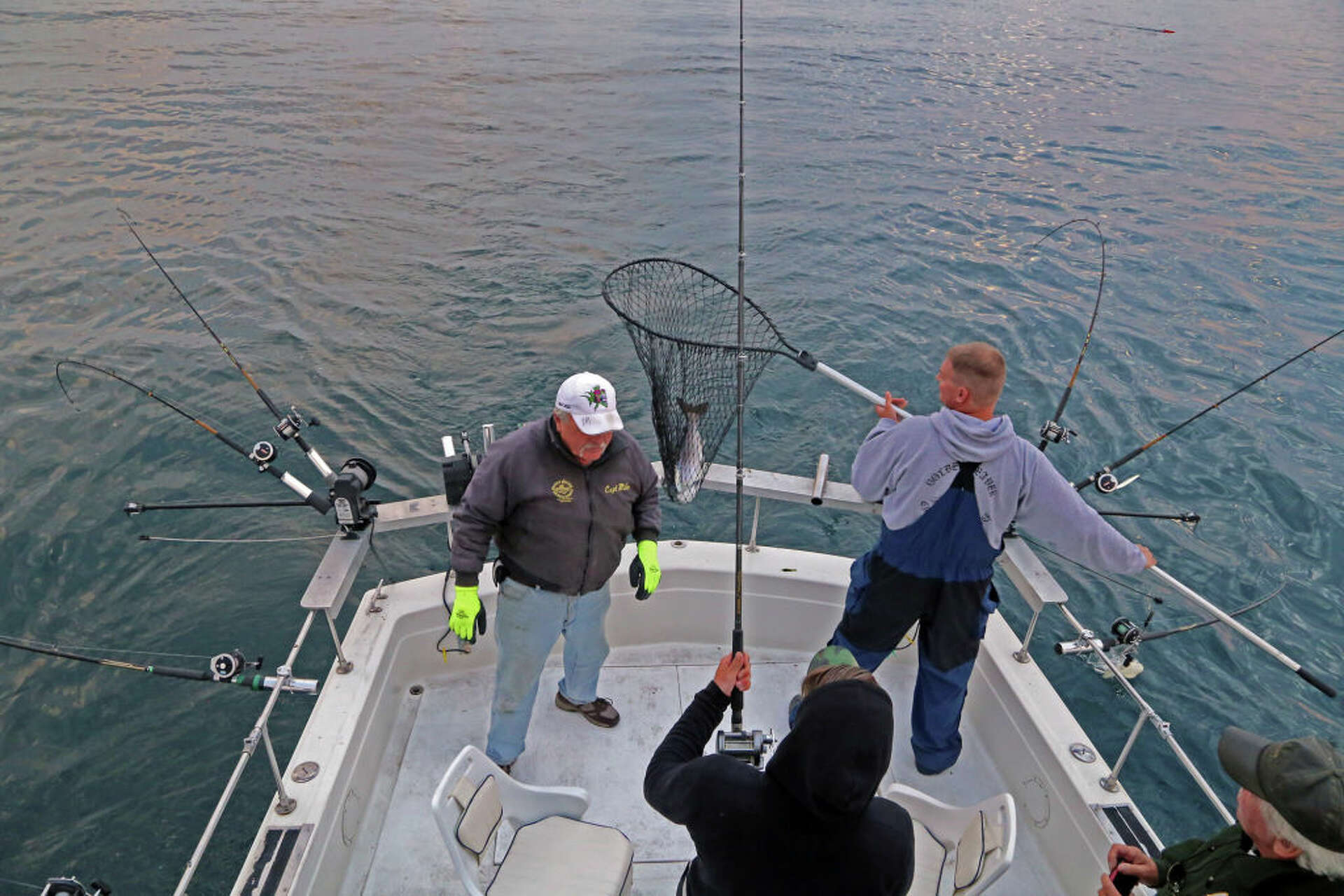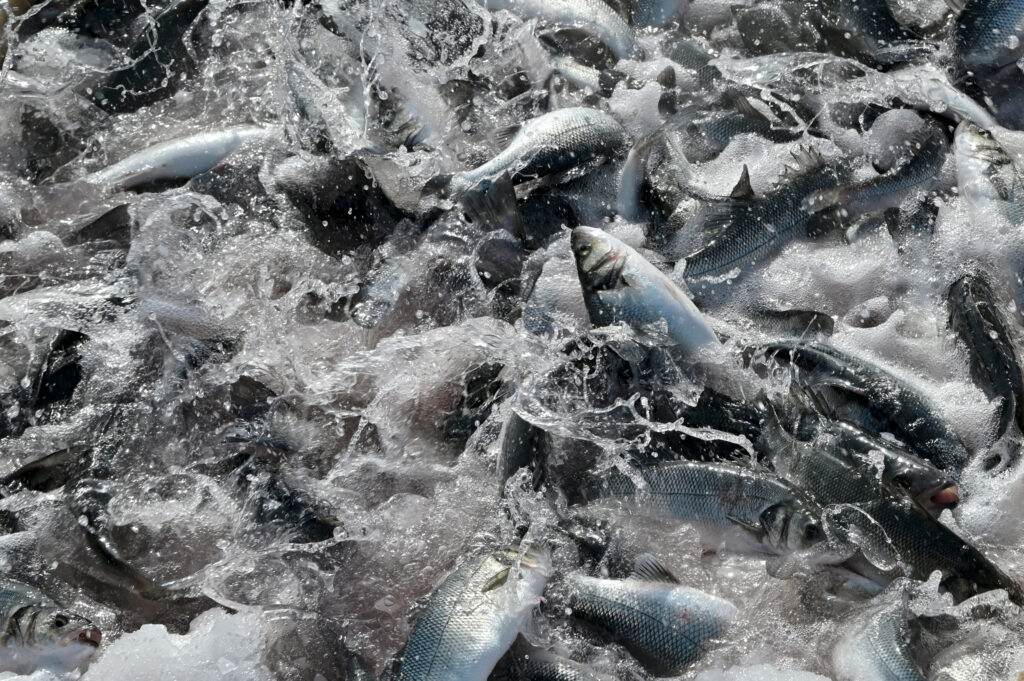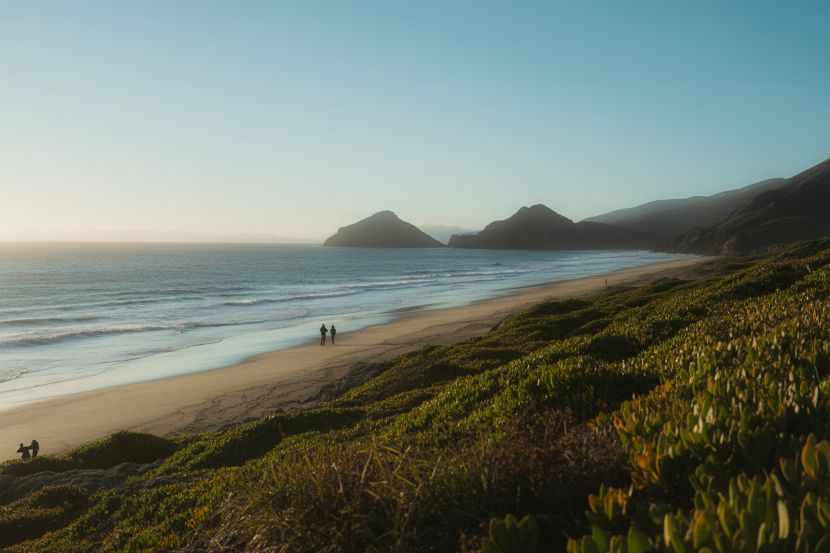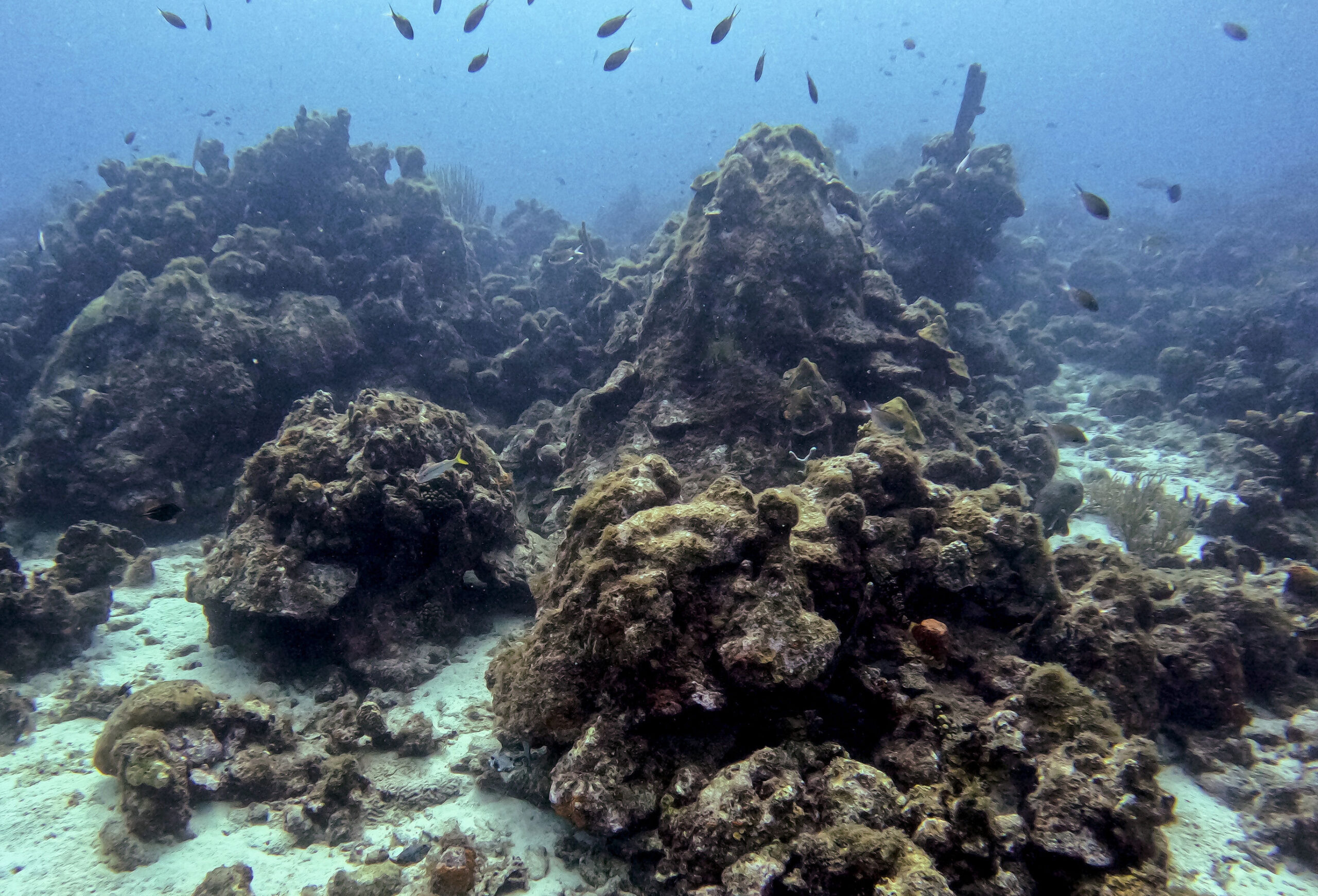Michigan Department of Natural Resources stocks 19 million fish statewide – Petoskey News-Review

Report on Michigan’s 2025 Fish Stocking Program and Alignment with Sustainable Development Goals
Executive Summary
The Michigan Department of Natural Resources (DNR) has successfully completed its spring and summer fish stocking season, releasing nearly 19 million fish, weighing over 331.5 tons. This initiative is a cornerstone of the state’s strategy to support key United Nations Sustainable Development Goals (SDGs), particularly SDG 14 (Life Below Water) and SDG 8 (Decent Work and Economic Growth). The program enhances biodiversity, promotes sustainable tourism, and contributes an estimated $3.9 billion to the state’s economy, demonstrating a commitment to environmental stewardship and sustainable economic development.
Program Contributions to Sustainable Development Goals
SDG 14: Life Below Water & SDG 15: Life on Land
The stocking of 10 different species and one hybrid across 716 sites directly supports the conservation and sustainable use of aquatic ecosystems. By replenishing and managing fish populations in both the Great Lakes and inland water bodies, the DNR actively works to protect biodiversity and maintain ecological balance, which are core targets of SDG 14 and SDG 15.
SDG 8: Decent Work and Economic Growth
The program is a significant driver of economic activity. The estimated $3.9 billion generated through the sportfishing industry, tourism, and related businesses promotes sustained, inclusive, and sustainable economic growth. This provides quality fishing opportunities that support local economies and livelihoods, aligning with the principles of SDG 8.
SDG 17: Partnerships for the Goals
The success of the program relies on robust partnerships. The DNR collaborates with two cooperative hatcheries at Lake Superior State University and Michigan State University, as well as local sporting organizations. These multi-stakeholder partnerships are essential for achieving the program’s large-scale conservation and economic goals, embodying the spirit of SDG 17.
Operational and Logistical Overview
Program Execution
The extensive logistical effort required to meet stocking targets underscores the program’s scale and efficiency. Key operational metrics include:
- Total Trips: 417
- Staff Hours: 2,345
- Miles Traveled: Over 91,000
- Stocking Sites: 716
Despite operational challenges, such as a severe ice storm causing a power outage at the Oden State Fish Hatchery, program resilience ensured that all stocking goals were met without any loss of fish.
Hatchery Production and Distribution Analysis
State and Cooperative Hatchery Contributions
Michigan’s network of six state hatcheries and two cooperative hatcheries is responsible for rearing and distributing the fish. Each facility contributes specific species to meet the diverse ecological needs of the state’s waterways.
- Marquette State Fish Hatchery: Stocked 368,452 yearling lake trout, brook trout, and splake, plus 457 adult trout, across 94 sites.
- Thompson State Fish Hatchery: Stocked 2,397,307 yearling steelhead, Chinook salmon, muskellunge, and walleye across 51 sites, primarily in the Great Lakes.
- Oden State Fish Hatchery: Stocked 737,604 yearling brown and rainbow trout, plus 6,270 adult trout, across 98 inland and Great Lakes sites.
- Harrietta State Fish Hatchery: Stocked 825,388 yearling brown and rainbow trout across 171 sites, primarily inland.
- Platte River State Fish Hatchery: Stocked 4,892,188 Atlantic and coho salmon, plus 31,722 Skamania steelhead (from Indiana DNR), across 30 Great Lakes sites.
- Wolf Lake State Fish Hatchery: Stocked 7,198,561 steelhead and Chinook salmon, plus 29,759 channel catfish (from Ohio DNR), across 49 Great Lakes sites.
- Lake Superior State University Cooperative Hatchery: Stocked 23,378 Atlantic salmon into the St. Marys River, demonstrating a successful partnership under SDG 17.
Future Outlook and Species-Specific Initiatives
Walleye and Lake Sturgeon Programs
A significant component of this year’s effort was the stocking of over 2.5 million walleye spring fingerlings, reared in partnership with local sporting organizations. Future activities include fall stockings of brook trout, Atlantic salmon, walleye, muskellunge, and the ecologically significant lake sturgeon, which will be supplied by the cooperative hatchery operated with Michigan State University. These targeted efforts further the state’s commitment to restoring native species and enhancing aquatic biodiversity (SDG 14).
Analysis of Sustainable Development Goals in the Article
1. Which SDGs are addressed or connected to the issues highlighted in the article?
-
SDG 14: Life Below Water
This goal is central to the article, which focuses on the conservation and sustainable use of freshwater aquatic resources. The entire initiative of stocking nearly 19 million fish by the Michigan Department of Natural Resources (DNR) is a direct action to manage and enhance fish populations in the state’s lakes and rivers, thereby contributing to the health and productivity of these ecosystems.
-
SDG 15: Life on Land
While its title focuses on “Land,” SDG 15 also explicitly includes the protection and restoration of “inland freshwater ecosystems.” The article details the stocking of fish in 716 sites, including numerous “inland lakes and rivers.” This action is a form of ecosystem management and biodiversity conservation within these freshwater environments.
-
SDG 8: Decent Work and Economic Growth
The article directly connects the environmental activity to economic benefits. It states that the fish stocking program “brings an estimated $3.9 billion into the state’s economy through the sportfishing industry, tourism and related businesses.” This highlights how conservation efforts can support sustainable tourism and contribute to economic growth.
-
SDG 17: Partnerships for the Goals
The success of the fish stocking program relies on collaboration, a key principle of SDG 17. The article mentions partnerships between the DNR, “local sporting organizations,” universities like “Lake Superior State University” and “Michigan State University,” and other state agencies such as the “Indiana Department of Natural Resources” and the “Ohio Department of Natural Resources.”
2. What specific targets under those SDGs can be identified based on the article’s content?
-
Under SDG 14 (Life Below Water)
- Target 14.2: Sustainably manage and protect marine and coastal ecosystems. Although the article deals with freshwater, the principle of sustainably managing and restoring aquatic ecosystems to ensure they are healthy and productive is directly applicable. The stocking program is a management action aimed at maintaining robust fish populations for “ecological benefits and fishing opportunities.”
- Target 14.4: Effectively regulate harvesting and end overfishing… and implement science-based management plans, in order to restore fish stocks. The fish stocking program is a clear example of a “science-based management plan” designed to restore and maintain fish stocks, ensuring the sustainability of recreational fishing.
-
Under SDG 15 (Life on Land)
- Target 15.1: Ensure the conservation, restoration and sustainable use of… inland freshwater ecosystems and their services. The stocking of millions of fish into “716 stocking sites,” including many inland lakes and rivers, is a direct act of restoration and conservation aimed at ensuring the sustainable use of these freshwater ecosystems.
- Target 15.5: Take urgent and significant action to… halt the loss of biodiversity. By rearing and stocking 10 different species and one hybrid, including native species like lake trout, brook trout, and lake sturgeon, the program actively works to maintain and enhance aquatic biodiversity in Michigan’s waters.
-
Under SDG 8 (Decent Work and Economic Growth)
- Target 8.9: Devise and implement policies to promote sustainable tourism that creates jobs. The article explicitly frames the fish stocking program as a driver for the state’s tourism and sportfishing industry, which generates “$3.9 billion” for the economy, thereby supporting jobs and local businesses.
-
Under SDG 17 (Partnerships for the Goals)
- Target 17.17: Encourage and promote effective public, public-private and civil society partnerships. The article highlights the collaboration between the DNR (public), local sporting organizations (civil society), universities (academic/public), and other state governments (public-public) as essential to the program’s success.
3. Are there any indicators mentioned or implied in the article that can be used to measure progress towards the identified targets?
Yes, the article provides several quantitative and qualitative indicators that can measure progress:
-
Indicators for SDG 14 & 15 (Ecosystem Health and Biodiversity)
- Number of fish stocked: The article states “nearly 19 million fish” (or 18,958,970 in the image caption) were stocked, serving as a direct measure of the scale of the restoration effort.
- Total weight of fish stocked: The figure of “more than 331.5 tons” provides another quantitative measure of the stocking program’s output.
- Number of species stocked: The stocking of “10 different species and one hybrid” is an indicator of the effort to maintain and enhance biodiversity.
- Number of stocking sites: The “716 stocking sites” indicate the geographical scope and reach of the conservation program across the state’s freshwater ecosystems.
-
Indicator for SDG 8 (Economic Growth)
- Economic contribution of sustainable tourism: The “$3.9 billion” brought into the state’s economy through sportfishing and tourism is a direct financial indicator of the program’s success in promoting sustainable economic activity.
-
Indicator for SDG 17 (Partnerships)
- Number and type of partners: The article implies an indicator by listing the various partners involved: the DNR, local sporting organizations, two universities, and two other state DNRs. This demonstrates the existence and breadth of the multi-stakeholder partnership.
4. Summary Table of SDGs, Targets, and Indicators
| SDGs | Targets | Indicators Identified in the Article |
|---|---|---|
| SDG 14: Life Below Water |
14.2: Sustainably manage and protect aquatic ecosystems.
14.4: Implement science-based management plans to restore fish stocks. |
|
| SDG 15: Life on Land |
15.1: Ensure the conservation and restoration of inland freshwater ecosystems.
15.5: Halt the loss of biodiversity. |
|
| SDG 8: Decent Work and Economic Growth | 8.9: Promote sustainable tourism. |
|
| SDG 17: Partnerships for the Goals | 17.17: Encourage effective public, public-private and civil society partnerships. |
|
Source: petoskeynews.com

What is Your Reaction?
 Like
0
Like
0
 Dislike
0
Dislike
0
 Love
0
Love
0
 Funny
0
Funny
0
 Angry
0
Angry
0
 Sad
0
Sad
0
 Wow
0
Wow
0

















































:focal(1500,1000)/https://media.globalcitizen.org/a6/9a/a69a4720-d8a1-4715-b596-18738d03c05c/rotary_polio_hero_image.jpg?#)






/countries/sri-lanka/photo-credit---dmc-sri-lanka.tmb-1200v.jpg?sfvrsn=dc298bcc_1#)
















